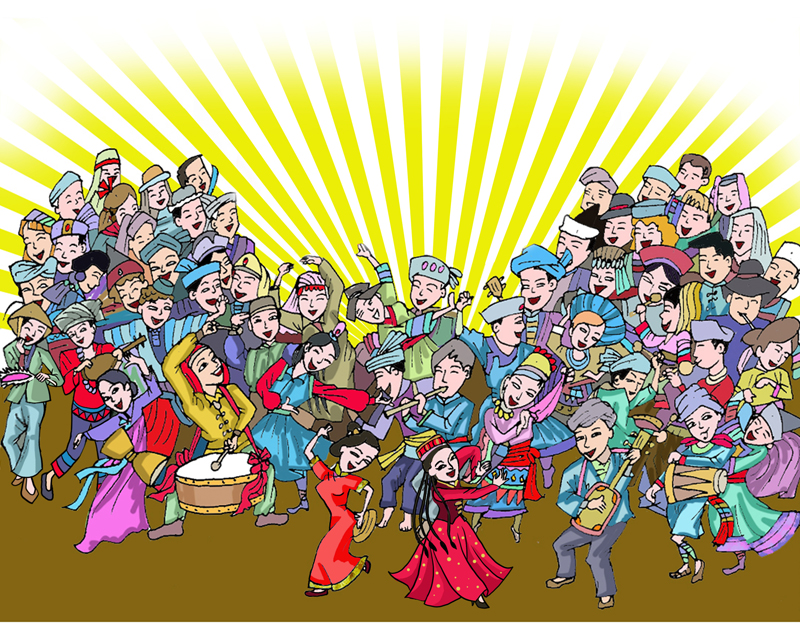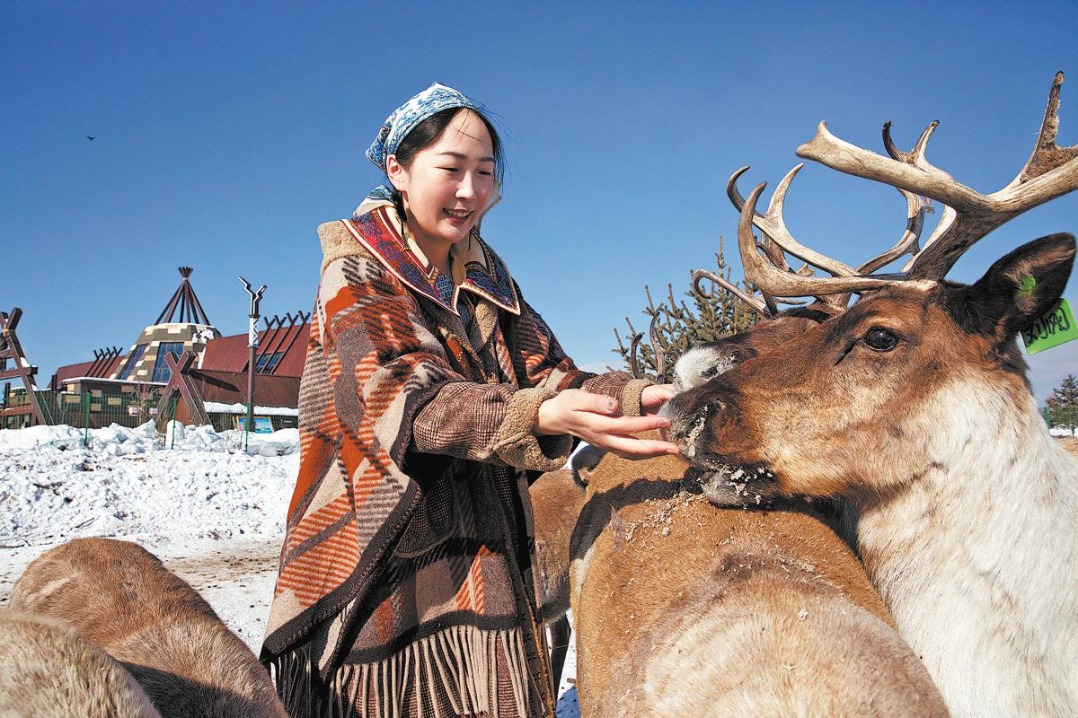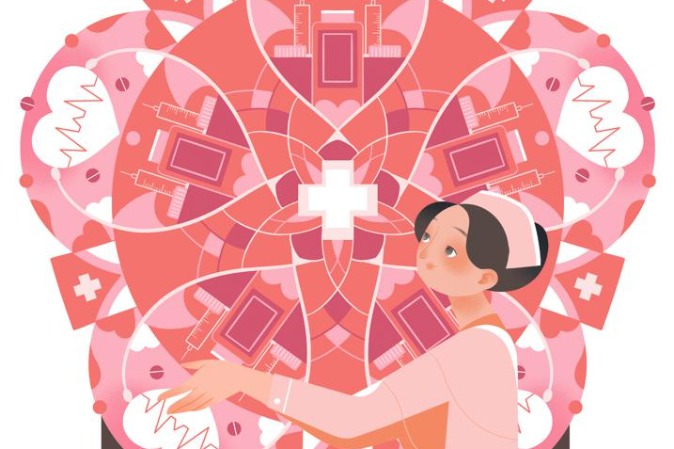Xinjiang's cultures integral part of Chinese culture


Editor's note: A white paper published by the State Council Information Office on Thursday shows the Chinese government attaches great importance to the protection and development of the traditional cultures of all ethnic groups in the Xinjiang Uygur autonomous region. Four scholars share their views on the issue with China Daily:
All ethnic cultures are part of Chinese culture
China emphasizes that all ethnic cultures that originated in the fertile soil of Chinese civilization have not only promoted their own development, but also enriched Chinese culture.
Chinese culture has been inherited and developed by all ethnic groups in China, and all ethnic cultures are an integral part of Chinese culture, which has been enriched due to the diversity of the environment since ancient times. After the Qin and Han dynasties (221 BC-220 AD), China's unified thinking gradually formed and the culture of the Central Plains continued to integrate with the cultures of surrounding areas. And through their development during the successive dynasties, the cultures of all ethnic groups have deeply integrated with each other, jointly making Chinese culture as brilliant as it is. The different and diverse ethnic cultures have enriched Chinese culture, and their mutual exchanges and learning have been a powerful driving force for its continuous development and enrichment.
The white paper points out that Chinese culture is a source of the power behind the development of various ethnic cultures in Xinjiang. As a matter of fact, all ethnic cultures in Xinjiang have been borrowing from Chinese culture from the very beginning. Archaeological excavations of painted potteryware unearthed in Xinjiang shows the influence of the Yangshao Culture in the middle reaches of the Yellow River, while many articles made from Xinjiang's Hetian jade have been unearthed in the Shang-dynasty (c.1600 BC-1046 BC) Tomb of Fu Hao in Anyang, Central China's Henan province.
Many pre-Qin (c. 2100-221 BC) materials recording communication between the Central Plains and Xinjiang have been found. Agricultural production techniques, the etiquette system, Chinese-language books, and music and dances of the Central Plains spread across the Western Regions. Musical instruments and music from the Western Regions were introduced to the Central Plains and exerted a great influence on local music. The treasure house of Chinese culture boasts elements of the Uygur Muqam, the Kazak Aytes art, the Kirgiz epic Manas, the Jangar epic of the Oirat Mongols, and many other great cultural works of various ethnic groups.
Multiple cultures have coexisted in Xinjiang since ancient times. It has seen the exchanges among diverse cultures. And all ethnic cultures have contributed to the formation and development of Chinese culture. As a key hub on the ancient Silk Road, Xinjiang was historically the gateway of the opening of the Chinese civilization to the West. Due to its special geographical location, Xinjiang has been a place of diversified cultures since ancient times, and has made many excellent cultural achievements. All ethnic groups in Xinjiang are economically interdependent and embrace each other's cultures. The unique natural environment of and geographical conditions in Xinjiang resulted in the development of refined oasis farming and grassland nomadism, and migrating ethnic groups with different lifestyles and working practices communicated and integrated with, and complemented each other, creating a dynamic coexistence of different cultures.
As a water conservancy and irrigation project in Xinjiang, the famous karez (underground irrigation tunnel system) is the result of further innovation and reconstruction on the well sinking technology that spread from the Central Plains to the western region. With a total length of more than 5,000 kilometers, the karez in Turpan, the Great Wall and the Beijing-Hangzhou Grand Canal are known as the three major ancient Chinese projects, demonstrating that all ethnic cultures in Xinjiang are the common spiritual wealth of the Chinese nation.
In Xinjiang, the mutual use and learning of different languages have become a common phenomenon, and it is also a common hobby for members of all ethnic groups in Xinjiang to enjoy various featured delicacies.
History shows that when the central government effectively administers Xinjiang and maintains social stability, the exchanges between and integration of the various ethnic cultures in Xinjiang and the culture of the Central Plains have been smooth and their economies and cultures flourish. The cultures of the ethnic groups in Xinjiang can survive only if they take root in Chinese culture, and progress and prosper only through exchanges and integration with the other cultures.
Li Xiaoxia and Mulati Heiniyati are researchers at the Xinjiang Academy of Social Sciences.
Ethnic groups must help revitalize Chinese culture
Through exchange of knowledge and mutual learning, the Chinese people of all ethnic groups have jointly created the splendid Chinese civilization over 5,000 years.
At present, the cultures of all ethnic groups in Xinjiang are in their best development period. In the process of realizing the Chinese Dream of national rejuvenation, the Communist Party of China is leading the people of all ethnic groups in Xinjiang to create a better life and shoulder the historical responsibility of elevating the Chinese civilization to new heights.
The different ethnic cultures of Xinjiang are a treasure in the flourishing Chinese cultural garden. Xinjiang has been an important part of the endogenous civilization of the Chinese nation, playing an important role in promoting cultural exchanges among all ethnic groups. Since ancient times, the cultures of all ethnic groups in Xinjiang and the culture of the Central Plains have been closely interlinked, giving rise to the elements of the Chinese civilization featuring multicultural integration and multicultural coexistence with regional characteristics.
In Chinese culture's long history of development, all ethnic groups in Xinjiang, including the Uygur, Han, Kazak, Kirgiz and Mongolians, have been communicating and interacting with each other, and thus constantly facilitating the integration of all ethnic cultures in Chinese culture.
Chinese culture has always been the emotional support, and soul and spiritual home of all ethnic cultures in Xinjiang, as well as a source of power for their development. Chinese culture covers all the cultural fields of Xinjiang, including its various cultural sites, excavated cultural relics, ancient books, intangible cultural heritages and folk cultures. Also, Chinese culture provides rich fertile soil for the progress of literary and artistic creation, publication, and network of cultures of all ethnic groups in today's Xinjiang.
The cultures of all ethnic groups in Xinjiang are rooted in the fertile soil of the Chinese civilization, and are closely related to the trunk of the Chinese culture and its branches and leaves, and have made important contributions to the development of Chinese culture. As an integral part of Chinese culture, the cultures of all ethnic groups in Xinjiang continuously interpret the characteristics and implications of the Chinese civilization in the new era.
Since the founding of the People's Republic of China, the central government has been attaching great importance to the excavation, preservation and protection of the fine traditional cultures of all ethnic groups in Xinjiang. In particular, since the launching of reform and opening-up, the State has further strengthened efforts to more orderly preserve and protect these fine traditional cultures, further enhancing the pride of all ethnic groups in Xinjiang as inheritors of Chinese culture.
Thanks to the great achievements China has made in economic and social development in the 40 years of reform and opening-up, the central government has actively brought into play its policy advantages and invested huge resources to vigorously promote the development and prosperity of various ethnic cultures in Xinjiang. For example, it has taken substantial measures to strengthen the region's cultural legislation, manage its cultures according to law, and improve its cultural service system.
To sum up, the modern transformation and sustainable development of all ethnic cultures in Xinjiang should shoulder the historical responsibility of not only revitalizing Chinese culture, but also using the cultural undertakings and cultural industry policies of the Party and government as guideline principles for cultural development. In the new historical period of cultural exchanges and integration, the people of all ethnic groups should not only achieve prosperity in their cultural creation, but also actively push forward their cultural progress.
Liu Haichao is a researcher at the School of Politics and Public Administration, Southwest University of Political Science and Law.
Protecting cultural heritage for history
China is a multi-ethnic country with a long history and profound culture, and its various ethnic groups have created a time-honored and splendid culture. As spiritual and cultural symbols of the Chinese civilization, cultural relics are regarded as the embodiment of national memory, thus protecting cultural relics is protecting the country's history. Meanwhile, Chinese traditional cultural heritage also plays a significant role in cultivating the core values of socialism and national cohesion. Therefore, protecting cultural relics is a great work and benefits future generations.
The Xinjiang Uygur autonomous region, located in Northwest China, is rich in culture and ethnic diversity. Since ancient times, many people of different ethnic groups have come to settle in Xinjiang, bringing with them their own cultures and so enriching the overall Chinese culture.
A center for trade and communication on the ancient Silk Road, Xinjiang has remained dazzling and is home to numerous cultural relics and historical sites, such as the site of Bashbaliq City, the Beauty of Ancient Loulan Castle, the classical music of Muqam, and mulberry paper craftsmanship and other precious cultural heritage. In addition, the western region opened a new window for people of other places to understand the local culture. The special regional and social conditions of Xinjiang mean that protecting its cultural relics is of great significance to enhance the recognition of Chinese civilization and national unity.
Since the establishment of the People's Republic of China, the central government and Xinjiang local government have attached great importance to the protection of cultural relics and promulgated a series of guidelines, regulations and laws to better preserve cultural relics in Xinjiang, which have provided solid institutional guarantees for its cultural inheritance. In particular, cultural relics protection entered a new stage in 2008 on the basis of law with the introduction of regulations on the protection of Xinjiang intangible cultural heritage. These show that governments at all levels are fulfilling their duties in the management and security of cultural relics, and strengthening law enforcement protection.
There is no denying that the local government strives to preserve the cultural relics of the Silk Road in Xinjiang. Over the past decades, Xinjiang has witnessed the protection of a growing number of cultural relics that have been well maintained with reasonable plans.
Moreover, the cultural relics protection and archaeological excavation of Xinjiang have attracted much attention worldwide. At present, there are six world cultural heritage sites in the region, and the Chinese government has made great efforts to protect and renovate historical sites, rescue more than 3,000 priceless cultural relics. For example, since the end of the 20th century, the ancient Silk Road cultural heritage exhibitions of Xinjiang have been held abroad in countries such as Japan, the United States and Germany, providing a platform for people in other countries to better understand Chinese traditional culture.
In addition, for the past many years, the Chinese government has also made unremitting efforts to enable ethnic cultures to accommodate the modern trend of engaging in exchanges with and mutual learning from others while strengthening each group's cultural confidence. As to the intangible cultural heritage protection, it is noteworthy that Uygur on ikki Muqam, which is an important traditional musical form for the Uygur ethnic group, has successfully survived through many creative ways such as the building of a cultural heritage protection experimental area that provides subsidies for the inheritors and holds Muqam art training class. Furthermore, Manas, a Kirgiz form of epic of poem, has also been listed among the Masterpieces of the Oral and Intangible Heritage of Humanity by UNESCO. And all these endeavors aim to ensure that the excellent traditional Xinjiang ethnic cultures are passed on to the succeeding generations.
Overall, to enhance cultural relics protection and inheritance is an arduous task, but it is undoubtedly a great mission and responsibility that can consolidate cultural confidence and promote the flourishing of socialist culture. Therefore, in the new era, Xinjiang will continue to strive to protect cultural relics and make contributions to the creative development of Chinese traditional culture.
Zhou Li is a researcher with Xinjiang Academy of Social Sciences.
Still a crossroad for cultural exchanges
Xinjiang is a crossroad for multiple cultures and religions, and home to multiple ethnic groups. The white paper Cultural Protection and Development in Xinjiang released by the State Council Information Office on Thursday points out that many ethnic cultures in the Xinjiang Uygur autonomous region are part of the broad tapestry of Chinese culture, and Xinjiang has long been the door for Chinese civilization's opening-up westwards.
The ancient Silk Road has opened a broad space for cultural exchanges between the East and the West. The Han Dynasty (202 BC-220) sent its first envoy Zhang Qian to visit regions to its west in 138 BC. Zhang reached the region as far as Afghanistan, which helped the Central Plains to establish official connections with its western neighbors, and blazed a trail through the mountains and deserts, which became a way for cultural exchanges between the East and the West.
The local ethnic groups residing in oases to the south of the Tianshan mountain range in Xinjiang prospered with the boom in trade along the Silk Road. A number of business towns sprang up, promoting regional economic growth.
The dynasties after the Han Dynasty continuously sent garrison troops or farmers to Xinjiang to till the land and plant crops. The newcomers built a large number of water conservancy facilities and brought with them advanced production tools and technology, which fostered the development of agriculture and handicrafts. During this process, more ethnic groups came to settle in Xinjiang, bringing their technology, cultures and customs to the region.
Endless streams of travelling merchants went to and fro along the Silk Road in Xinjiang. China's paper-making and silk production technologies were transferred to the West through Xinjiang, which had a far-reaching influence on world civilization.
The spread of religions was also an important cultural exchange phenomenon on the Silk Road. Buddhism spread to Xinjiang in the 1st century BC and prospered between the 4th and 10th century. Taoism entered Xinjiang in about the 5th century, and boomed during the Qing Dynasty (1644-1911). And Islam came to Xinjiang from the late 9th century to early 10th century. Over a long period of history, Xinjiang has been witnessing peaceful co-existence of different religions and cultures.
Nowadays, with the support of the central government, a multi-layer comprehensive cultural exchange pattern has formed in Xinjiang, which is engaged in various kinds of international cultural exchanges and cooperation.
The Xinjiang International Dance Festival and China-Eurasia Expo have become influential cultural exchange brands. The Sixth China-Eurasia Expo this year attracted participants from 35 countries and regions. More than 700 enterprises from home and abroad took part in the event. The total volume of contracted projects hit 270.94 billion yuan ($39.04 billion), up 11.98 percent year-on-year. The fair has become an important platform for economic cooperation between China and countries and regions along the Silk Road Economic Belt and the 21st Century Maritime Silk Road, and China's opening-up to the west.
China has hosted the Children's Art Festival of Xinjiang seven times since 2009, which has seen more than 2,330 children from 12 countries come to perform in Xinjiang.
Also, Xinjiang has hosted media seminars seven times since 2012, attracting media representatives from 25 countries along the Belt and Road routes.
And between 1985 and 2017, Xinjiang has seen 50,000 foreign students studying in its colleges and universities.
Xinjiang's special strengths in medical care, meanwhile, have attracted patients from neighboring countries and regions to come for treatment.
China has exhibited Xinjiang's cultural relics in Japan, the United States, Germany and the Republic of Korea since late last century.
A batch of intangible cultural heritage items from Xinjiang have been exhibited in the United States, the United Kingdom, Japan, France and neighboring countries.
China also organizes some cultural exchange groups and cultural weekly activities regularly abroad to deepen the world's understanding of Xinjiang.
Chinese think tanks often invite scholars and researchers from Western think tanks to visit Xinjiang.
Located in the core zone of the Silk Road Economic Belt, Xinjiang will continue to play an important role for cultural and economic exchanges.
Lyu Wenli is a researcher on Xi Jinping Thought on Socialism with Chinese Characteristics for a New Era at the Chinese Academy of Social Sciences.































